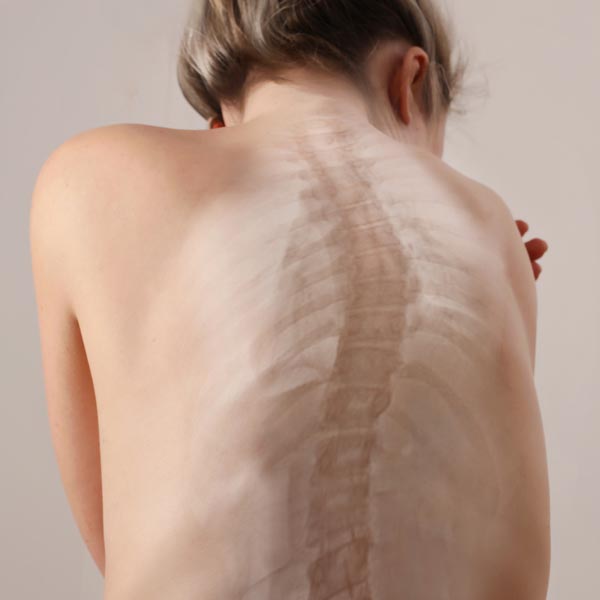June is scoliosis awareness month

Every month during a calendar year we tend to shed light onto a condition that people should be more aware and educated on. For example, September is Cancer Awareness Month, May is Mental Health Awareness Month, and June is Scoliosis Awareness Month. These are just a few examples of awareness months; there are so many more and sometimes multiple per month. However, as we said, the month of June is Scoliosis Awareness Month. What is scoliosis? Who does it affect? How does it affect a person? Is it treatable? Can it be prevented? All of these questions are ones that we will answer in today’s blog.
To begin with, what is scoliosis? Scoliosis is a condition of the spine that results in a sideways abnormal curve. To put that image into perspective, image you are looking at a person from the back; now imagine that their spine is curving in an “S” shape. That is what scoliosis is. Most cases of scoliosis are mild, while others can be more severe, if not caught and treated early. This is because most scoliosis conditions begin in adolescents, more commonly females usually between 11-15 years old. It is often triggered by a growth spurt around a girl’s first menses. If scoliosis is not caught early and treated as the child continues to grow and develop, their condition can turn into a more serious one.
What are the signs and symptoms of scoliosis? The most common symptom of scoliosis is the sideways curve in someone’s spine. If it is severe enough, the curve is so drastic that you can visible see it. The person may even be hunched over or forward. Other times, a person can feel it or even see an asymmetry in their bodies. Other ways to identify possible scoliosis conditions is to examine the individual’s shoulders, are they uneven? How about their hips, are those uneven? In some cases you can even tell based off of one’s shoulder blades. One side of the ribcage may be more pronounced than the other side. This is due to the rotational twist the spine goes through with scoliosis. If any of these parts of the body are uneven, then it can be a sign that this individual has developed scoliosis.
What are the different types of scoliosis? There are a few different ways to classify what type of scoliosis that an individual has. One way being which category that they fall in: idiopathic, congenital, or neuromuscular; or where the curve is located on the individuals spine. First off, what is idiopathic, congenital, and neuromuscular scoliosis? Idiopathic scoliosis is the condition of scoliosis in which the cause is unknown or that there is no single direct cause. Congenital scoliosis is a result from a spinal defect at birth. This from of scoliosis is usually identified rather early. Lastly, neuromuscular scoliosis is developed second hand due to another disease that the individual suffers from; like, cerebral palsy or muscular dystrophy.
Now, there are also a few different types of scoliosis all based on where the curve in your spine lays. There is thoracic scoliosis, which has the curve prominently in the thoracic part of your spine. There is lumbar scoliosis, which lays lower on the spine. There is a thoracolumbar scoliosis, which lays in the middle of both regions. Lastly, there is combined scoliosis, which is where that is a curve in both regions of the spine, lumbar and thoracic. As you can see there is a multitude of ways to identify scoliosis based on the individuals unique condition. This helps make treatment more customizable to the person.
What are the risk factors? There are a few risk factors towards scoliosis, but the main one is age. As we said earlier, scoliosis usually begins to develop as a child is developing. As children hit a growth spurt and begin to enter puberty, scoliosis can start to show. Another risk factor is sex. Although scoliosis can affect any sex, girls tend to suffer from a more serious case of scoliosis more often than boys. Last but not least, family history. Scoliosis can be genetic. It can run down a line of family members. However, just because your parents have scoliosis does not mean you are bound to get it. Much like if your parents do not have scoliosis, you are not completely out of the woods. More recently, it was been discovered that adults can develop scoliosis as they age, mainly occurring in the 4th-6th decade of life.
Are there any treatments for scoliosis and can be it prevented? It depends on when and how severe the scoliosis is when it’s diagnosed. The most conservative type of treatment is to “watch and see.” Usually cases of scoliosis are mild. The scoliosis is monitored through repeat X-rays to see if the abnormal curve gets larger. If the scoliosis gets severe enough then surgery is recommended to straighten the spine with metal rods. However, if diagnosed early enough, there is a back brace that may be used to help treat some scoliosis conditions. Scolibrace is the best brace out there for stabilization and correction of scoliosis. The right treatment done at the right time, may not only help prevent it from getting worse, but help correct it. For more information, check out www.scolicare.com
Unfortunately, there is no prevention of scoliosis. That’s why education and awareness about scoliosis is so important. If you or a loved one has scoliosis, or you suspect you may have it, get your spine checked out today. Don’t wait.
